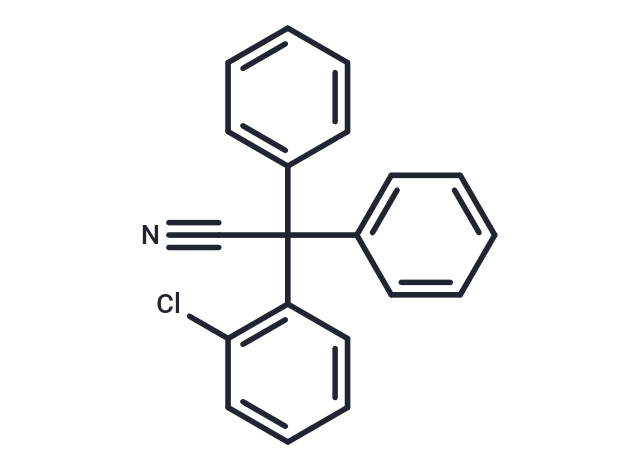Shopping Cart
Remove All Your shopping cart is currently empty
Your shopping cart is currently empty
TRAM 39 (2-Chloro-α,α-diphenylbenzeneacetonitrile) is a selective blocker of intermediate-conductance Ca2+-activated K+channels.

| Pack Size | Price | USA Warehouse | Global Warehouse | Quantity |
|---|---|---|---|---|
| 1 mg | $30 | - | In Stock | |
| 2 mg | $42 | - | In Stock | |
| 5 mg | $68 | - | In Stock | |
| 10 mg | $109 | - | In Stock | |
| 25 mg | $222 | - | In Stock | |
| 50 mg | $353 | - | In Stock | |
| 100 mg | $558 | - | In Stock | |
| 500 mg | $1,180 | - | In Stock |
| Description | TRAM 39 (2-Chloro-α,α-diphenylbenzeneacetonitrile) is a selective blocker of intermediate-conductance Ca2+-activated K+channels. |
| In vitro | In coeliac neurons, TRAM 39 depressed the amplitude of the prolonged conductance underlying the slow afterhyperpolarization, (gKCa2) by 57%[1]. |
| Synonyms | ZINC27105797, TRAM-39, 2-Chloro-alpha,alpha-diphenylbenzeneacetonitrile, 2-(2-chlorophenyl)-2,2-diphenylacetonitrile |
| Molecular Weight | 303.78 |
| Formula | C20H14ClN |
| Cas No. | 197525-99-8 |
| Smiles | C(C#N)(C1=C(Cl)C=CC=C1)(C2=CC=CC=C2)C3=CC=CC=C3 |
| Relative Density. | 1.193 g/cm3 (Predicted) |
| Storage | Powder: -20°C for 3 years | In solvent: -80°C for 1 year | Shipping with blue ice/Shipping at ambient temperature. | |||||||||||||||||||||||||||||||||||
| Solubility Information | DMSO: 50 mg/mL (164.59 mM), Sonication is recommended. | |||||||||||||||||||||||||||||||||||
Solution Preparation Table | ||||||||||||||||||||||||||||||||||||
DMSO
| ||||||||||||||||||||||||||||||||||||
| Size | Quantity | Unit Price | Amount | Operation |
|---|

Copyright © 2015-2025 TargetMol Chemicals Inc. All Rights Reserved.